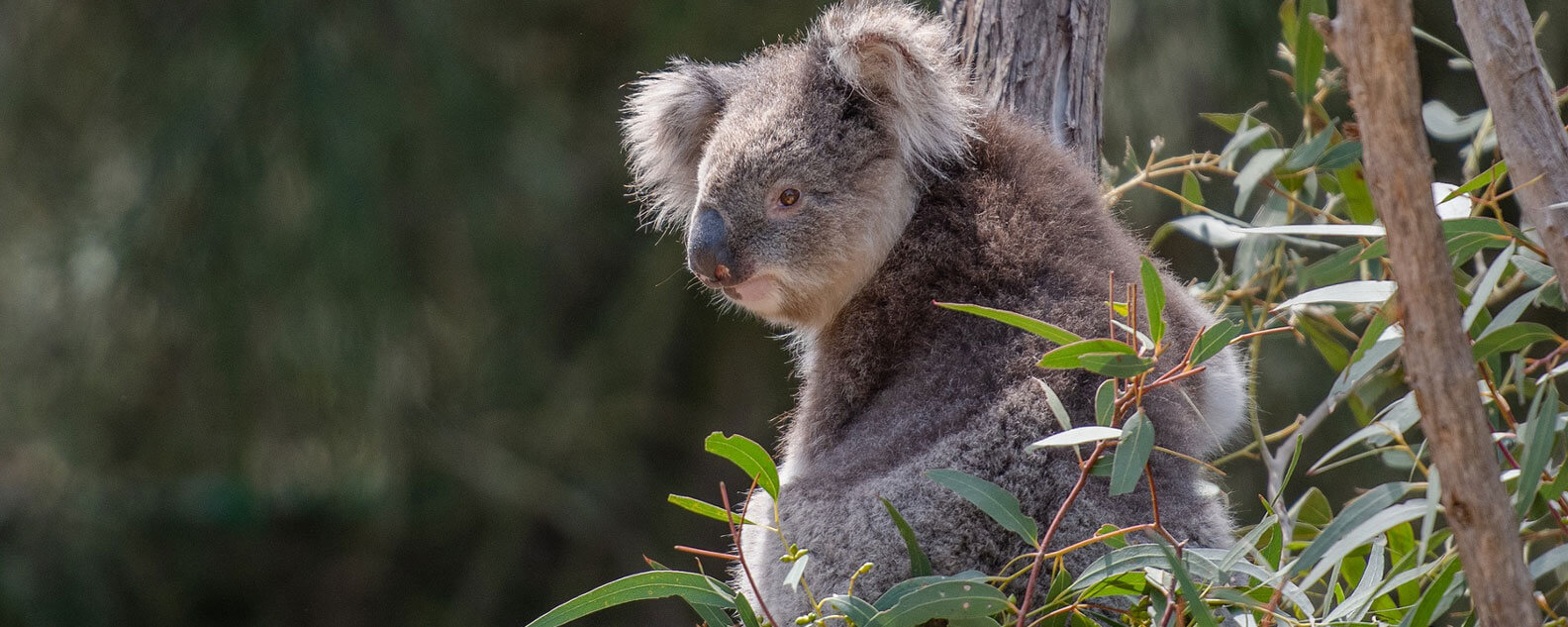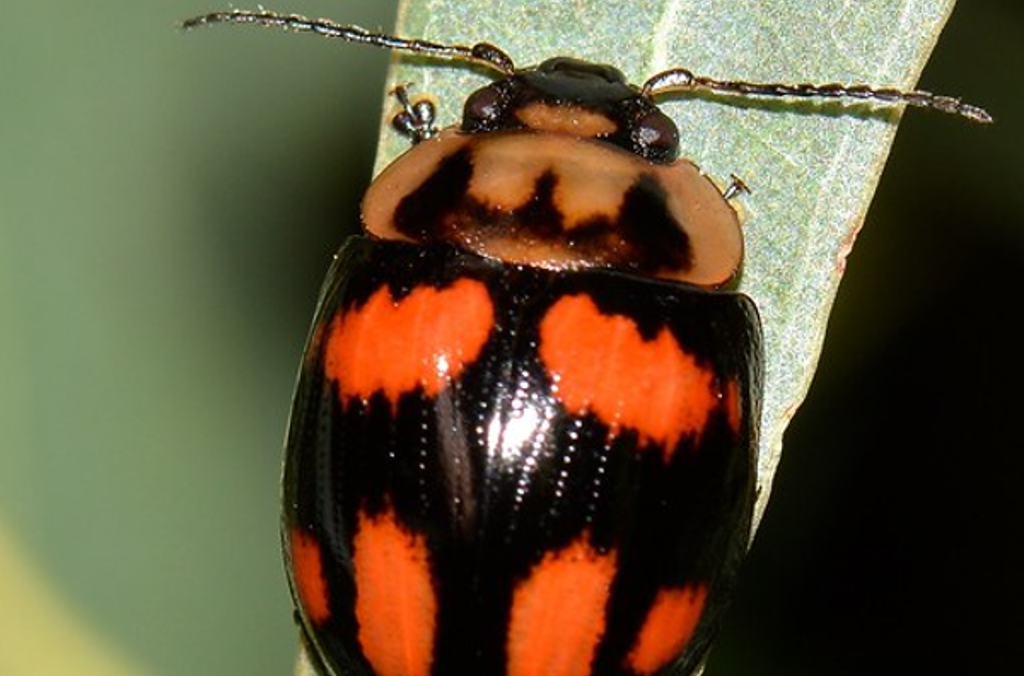Vertebrates and invertebrates
Vertebrates such as mammals, birds, reptiles and frogs seek out hollows and are particularly fond of eucalypts. Eucalypts are home to koalas, a species adapted to their diet of gum leaves low in protein and high in toxins, and a special eucalyptus leaf beetle called the Chrysomelidae. Beetles are not the only invertebrates to make their home in trees. What other invertebrates (insects) have you seen on a gum tree?
Other than koalas, many species of non-flying mammals such as possums depend on tree hollows for shelter and survival because they cannot fly away in danger. In fact, most animals choose trees with hollows over trees that don’t. Animals even choose dead trees with hollows to live in, as long as the dead tree is still standing. Scientists have found hollow-bearing trees used as habitats that are at least 100 years of age.
Can you name another non-flying mammal that lives in a tree?
Trees work best as habitats when they are grouped together to form long ‘corridors’. These corridors are crucial for allowing wildlife to move between habitats that are separated by houses and roads. Can you think of a place near your school or home that acts like a corridor from one bushy area to another?
Trees have friends too
In addition to animals, some plants make their home on the trunks and roots of trees. Fungi, algae, lichens and mosses need a healthy habitat to survive and they find this on and inside the layers of trees. In fact, lichens and mosses only grow in woodland areas where the air is clean, they will not flourish in gardens in polluted inner-city suburbs.
Fungi are good friends with trees – they break down organic matter, ‘cleaning up’ after a tree has died. Nearly all trees have fungi in their root zone called mycorrhizae which help them extract nutrients from the soil. Fungi are also essential for creating hollows in trees, which are critical habitats for birds, mammals, and reptiles.
Algae is everywhere – in the soil, on rocks, on trees, as well as in the river system. Algae form a relationship with fungus to produce lichen – which is often on the bark of trees. This type of 'friendship' between plants is known as symbiosis. Each has something to offer the other so that they live in harmony.
Moss is also a friend of trees because they rely on direct contact with water to survive. What’s the best position to find water in the forest? Under the canopy of a tree, of course! This is where rainwater will drip slowly onto the moss. There are at least 10,000 different mosses adapted to all sorts of climates around the world. Some actually need to be dry at times including those that are happy in the hot, Australian sun.
There are more than 1000 native Australian mosses living on and with trees and they do some very important work for the trees in exchange for moisture; they can help to stop erosion and absorb pollution and, for animals, provide a happy habitat.
Activities: Healthy habitats
1. Vertebrates and invertebrates
Use think, pair, square, and share to answer these inquiry questions. Which vertebrates and invertebrates use trees for:
Shelter?
Food?
Sleeping in at night?
Sleeping during the day?
Protection from predators?
Creating a colony?
Raising a family?








